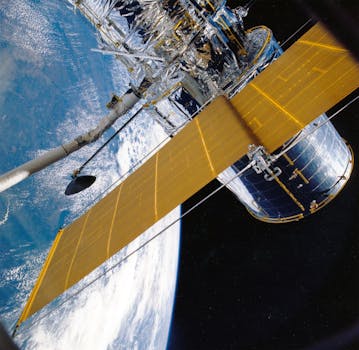
The Future of Satellites: Revolutionizing Global Communication and Exploration
The future of satellites is rapidly evolving, with advancements in technology and innovation leading to improved global communication, exploration, and environmental monitoring. The future of satellites holds great promise, with potential applications in fields such as telecommunications, navigation, weather forecasting, and Earth observation. As we look to the future, it is clear that satellites will play an increasingly important role in shaping our world.
Advances in Satellite Technology
One of the most significant advances in satellite technology is the development of smaller, more efficient satellites. These satellites, known as smallsats or cube satellites, are designed to be smaller and more cost-effective than traditional satellites. They are often used for specific missions, such as Earth observation or communication, and can be launched into space at a lower cost than traditional satellites.
Another significant advance in satellite technology is the development of reusable launch systems. Companies such as SpaceX and Blue Origin are working on developing launch systems that can be reused multiple times, reducing the cost of access to space and making it more accessible to a wider range of users. This technology has the potential to revolutionize the satellite industry, enabling the launch of more satellites and reducing the cost of satellite-based services.
Applications of Satellites
Satellites have a wide range of applications, from telecommunications and navigation to weather forecasting and Earth observation. They play a critical role in our daily lives, enabling us to communicate with people around the world, navigate our surroundings, and predict the weather. Satellites also have a number of environmental applications, including monitoring climate change, tracking ocean currents, and detecting natural disasters such as hurricanes and wildfires.
In addition to these applications, satellites are also being used for a number of other purposes, including space exploration and scientific research. Satellites have been used to study the Earth’s magnetic field, the solar wind, and the upper atmosphere, and have provided valuable insights into the Earth’s climate and the effects of human activity on the environment.
Challenges and Opportunities
Despite the many advances in satellite technology and the wide range of applications, there are still a number of challenges and opportunities facing the satellite industry. One of the biggest challenges is the issue of space debris, which poses a significant risk to satellites and other spacecraft. There are estimated to be hundreds of thousands of pieces of space debris in orbit around the Earth, and this number is expected to grow as more satellites are launched into space.
Another challenge facing the satellite industry is the issue of regulatory frameworks. There is currently a lack of clear regulations and standards for the satellite industry, which can make it difficult for companies to operate and for governments to regulate. This lack of regulation can also create opportunities for companies to innovate and develop new technologies, but it also poses risks for the environment and for human safety.
Conclusion
In conclusion, the future of satellites is rapidly evolving, with advancements in technology and innovation leading to improved global communication, exploration, and environmental monitoring. The development of smaller, more efficient satellites, reusable launch systems, and new applications for satellites are all contributing to the growth and development of the satellite industry. While there are challenges and opportunities facing the industry, it is clear that satellites will play an increasingly important role in shaping our world in the years to come.





